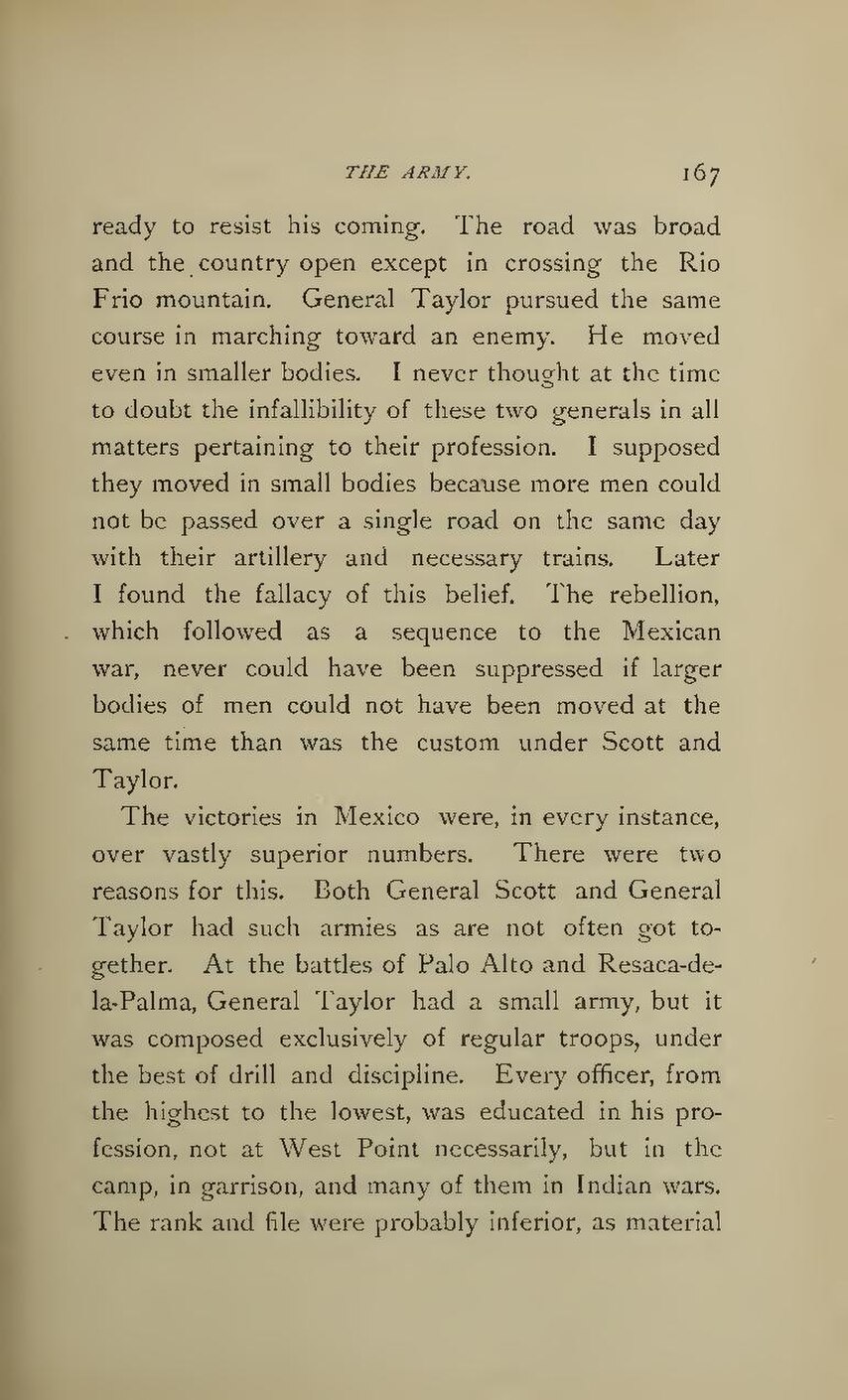ready to resist his coming. The road was broad and the country open except in crossing the Rio Frio mountain. General Taylor pursued the same course in marching toward an enemy. He moved even in smaller bodies. I never thought at the time to doubt the infallibility of these two generals in all matters pertaining to their profession. I supposed they moved in small bodies because more men could not be passed over a single road on the same day with their artillery and necessary trains. Later I found the fallacy of this belief. The rebellion, which followed as a sequence to the Mexican war, never could have been suppressed if larger bodies of men could not have been moved at the same time than was the custom under Scott and Taylor.
The victories in Mexico were, in every instance, over vastly superior numbers. There were two reasons for this. Both General Scott and General Taylor had such armies as are not often got together. At the battles of Palo Alto and Resaca-de-la-Palma, General Taylor had a small army, but it was composed exclusively of regular troops, under the best of drill and discipline. Every officer, from the highest to the lowest, was educated in his profession, not at West Point necessarily, but in the camp, in garrison, and many of them in Indian wars. The rank and file were probably inferior, as material
